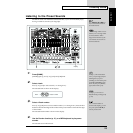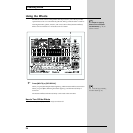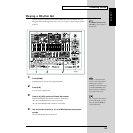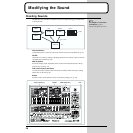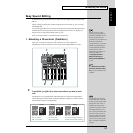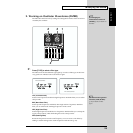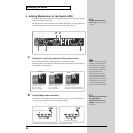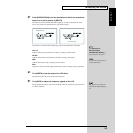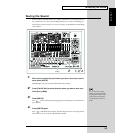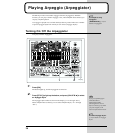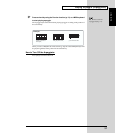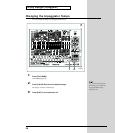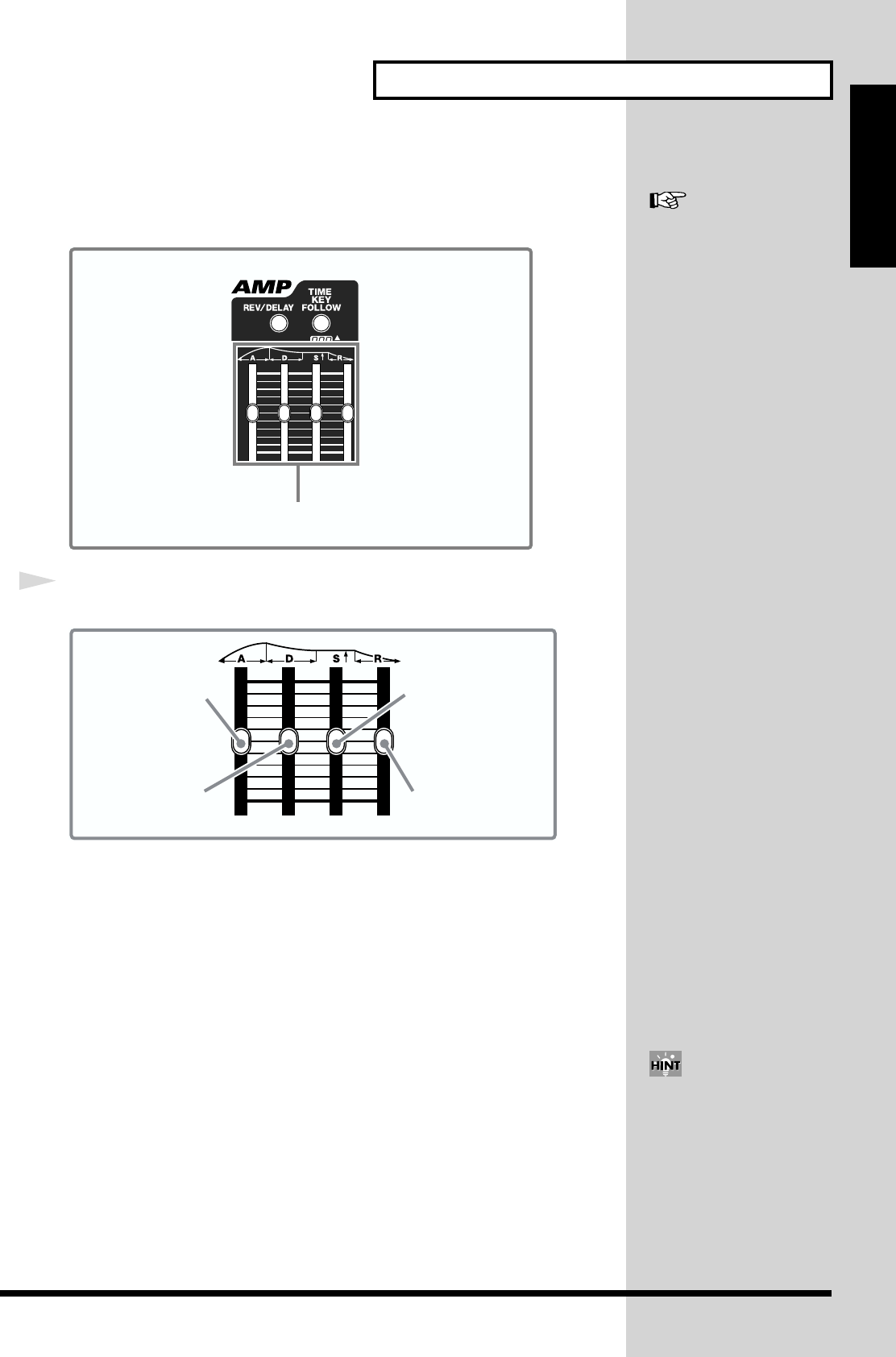
31
Modifying the Sound
Quick Start
3. Adding Changes in the Volume (AMP)
After a sound’s been created by the oscillators and has been filtered, you can apply
changes to the volume of the sound, and control the attack or decay of the sound.
fig.016
1
Use the Envelope sliders to adjust the changes in volume.
fig.015
[A]: Attack Time
Sets the time required for the volume to reach its peak. This time increases as you
raise the slider.
[D]: Decay Time
Determines the time required for the volume to drop from the peak to the sustain
level. If the sustain level is at its maximum, this will have no effect.
[S]: Sustain Level
Determines the level at which the volume is to be maintained after the peak has been
reached. While you continue to press a note-entry button (or the key of a MIDI
keyboard) it will keep sounding at this level.
[R]: Release Time
Sets the time needed for the volume to reach zero after you release your finger from
a note-entry button (or the key of a MIDI keyboard).
For example, if you shorten the attack time and lengthen the release time, it may
sound like a piano. If the sustain level is at maximum, it may sound like an organ,
and if the attack time is long, it may sound like a strings section.
Now, try modifying the sound using the LFO.
See “Changing the Volume
(AMP)” (p. 58) for details on
the amp.
1
Attack time slider
Sustain level slider
Decay time slider
Release time slider
You can also get the volume
modification times to change
depending on the keyboard
range within which the note-
entry buttons or MIDI
keyboard have been played
(TIME KEY FOLLOW) (p. 59).



